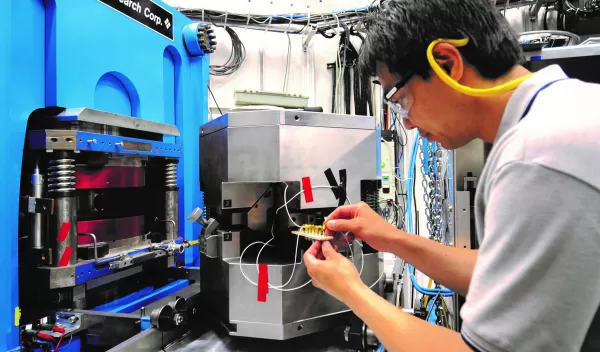
NSF announces new award for the Synchrotron for Earth and Environmental Science facility
The U.S. National Science Foundation has announced a $35 million award to the University of Chicago to operate the brand new Synchrotron for Earth and Environmental Science (SEES) facility that will develop, manage, operate and support user access to synchrotron-based experimental and analytical capabilities. Synchrotrons accelerate beams of particles at very high speeds in order to study the structural and chemical properties of molecules.
Synchrotrons in the U.S. are operated by the U.S. Department of Energy. Every year, they give hundreds of geoscientists the capabilities to complete their research. This new facility will act as a central organization to help provide access to a suite of analytical instrument capabilities at synchrotron beam sources across the country. SEES will provide on-site technical support, develop new instrumentation and techniques, foster research training and outreach to promote scientific progress, and advance understanding of Earth’s materials and processes.
SEES is vital for the U.S. to advance Earth and environmental sciences. This facility will enable scientists to investigate key information on how critical minerals form and which ones make up planet Earth. Research will address topics that have direct societal benefits such as natural hazard mediation, environmental stewardship, future technological advancements and human health.
"The new SEES award will provide Earth and environmental scientists with a 'seat at the table' to access over 30 synchrotron beamlines at DOE laboratories, including 19 new beamlines that were not previously supported by NSF," said Maggie Benoit, program director in NSF's Division of Earth Sciences. "SEES will provide state-of-the-art optics, sensors and data analysis capabilities to support transformational Earth and environmental research."
SEES represents not only a partnership with the University of Chicago but also a partnership between NSF and DOE. SEES will enable access to DOE-funded beamlines at Argonne National Laboratory, Lawrence Berkeley National Laboratory, Brookhaven National Laboratory and Stanford Synchrotron Radiation Lightsource. The expansion of the number of beamlines under this award will provide significant new benefits for the field of environmental science. SEES will be working collaboratively with programs at these synchrotron light sources to conduct a significant portfolio of education and outreach activities.
For more information about SEES, visit the University of Chicago’s Geoscience Synchrotron Users Group webpage.
